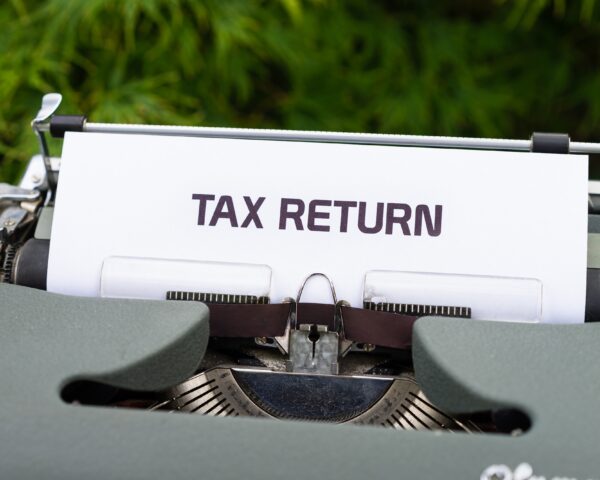In our UK pension information guide we will be providing you with a basic understanding of how pensions work in the UK. You may be squirreling away into your pension every month, but do you really understand how it works and the tax benefits? If the answer’s no, then read on.
What is a Pension? A tax efficient way to save, and give you a source of income when you retire. But there are different types of pensions to be aware of…
State Pension
The government will pay you a secure regular income when you reach state pension age. This depends when you were born – you can work this out here – https://www.gov.uk/state-pension-age. Note they are reviewing this at the moment so it may change. Return to our UK Pension information page to learn up to date details.
You build up your entitlement to the State Pension by making National Insurance contributions during your working life. The amount you get also depends on how long you’ve been paying National Insurance contributions for.
This is why it’s important to run yourself a low monthly salary, even if you are looking to pay yourself via dividends.
Defined Benefit Pension
Often known as a final salary pension, this would be arranged by your employer. This is where you receive an agreed annual pension income for life, no need to build up a pension pot. The amount is usually based on how long you’ve been in the pension scheme, and how much you earn.
Good gig if you can get it – These are most often provided by the Public sector and Government employers. Usually seen to be pretty attractive!
Defined Contribution Pensions
Grow your pot – Sometimes known as ‘money purchase’ pensions, these can be set up by your employer or by you personally. You pay into a ‘pot’, the pension scheme will invest this where they see fit and hopefully grow it.
Access your cash Once you’re 55 you can access your pension pot, your main options are below, don’t spend it all at once!
- Take it all in a lump sum. 25% of this is tax free, the rest is taxed as usual income.
- Take lump sums when you need them. For each lump sum 25% of this is tax free, the rest is taxed as usual income.
- Take 25% of your pot as a tax free lump sum, then use the rest to give you a regular taxable income.
- Take 25% of your pot as a tax free lump sum, then convert the rest into an annuity (a taxable retirement income). Your pension provider will calculate and offer this to you as an option.
Occupational/ workplace pensions
Where your Company sets up a Pension for you. All employees who meet the criteria now have to be auto-enrolled into their workplace pension scheme, you still have the option to ‘opt-out’.
How does this work? You and your Company will pay into a Pension scheme each month. The Pension scheme will invest this and hold this on your behalf until you are 55.
How much do I pay? You will contribute a % of your salary into a pension pot. From April 2019 you and your employer together have to contribute 8% of your salary. Your employer’s minimum is 3%, so if your employer puts the minimum in you would need to contribute 5%. If they chose to contribute more, you could contribute less.
The % of your salary is usually based on ‘Qualifying Earnings’, which is pre-tax Employment Income between £6,240 – £50,000 (2020/21 tax year).
So if you earn £30,000, you’ll get £1,901 into your Pension pot each year (£30,000 – £6,240) x 8%.
But the Government also helps – You also get tax relief on your pension contributions. This is a bit of an incentive from them to save for the future. Basically, some of the money you would have paid in tax on earnings, goes into your pension pot rather than HMRC.
If you’re a basic rate (20%) tax payer, and you contribute £100 from your salary into your pension, it would actually only cost you £80. The government will fund the £20, which is what it would have taken in tax from £100 of your salary.
Higher-rate (40%) and additional-rate (45%) taxpayers only need to pay £60 and £55 respectively to achieve the same £100 of pension savings. It’s good to save!
You can calculate the Pension relief you will get here – https://www.hl.co.uk/pensions/tax-relief/calculator
What happens when I move jobs? Your workplace pension is still yours. If you don’t keep paying in, the money will just remain invested and you’ll still get a pension when you reach the scheme’s pension age.
You can join another workplace pension scheme if you get a new job. You may be able to keep making contributions to your old pension, or you may also be able to combine your old and new pensions – it’s always worth talking to your pension providers to see what the options are.
There are providers out there who specialise in tracking down and combining you old pension posts. Pension Bee is a good one – https://www.pensionbee.com/our-vision
Personal Pension Schemes
Generally a pension scheme that you have set up yourself, these will all be ‘defined contribution’ – i.e. you are growing a pot to use later. There are various different types of personal pension…
SHP – Stakeholder Pension – These have low and flexible minimum contributions, and a default Investment investment strategy if you’re not after too much choice, or you’re happy to just let the pension people get on with it!
The Government has mapped out the conditions for these pensions, to try and make them more accessible and to limit any charges which apply.
SIPP – Self-Invested Personal Pension – SIPPs are a type of personal pension which gives you more flexibility over what your pot is invested in. You can either do this yourself, or pay an authorised Investment manager to manage these investment decisions for you.
Generally the range of assets you can invest in is wider with a SIPP. You can invest in Unit trusts, Investment trusts, Government securities, Commercial property, and Individual stocks and shares to name a few.
Although they give more flexibility they can also attract higher fees. SIPPs may be more suitable for more experienced investors, or where you have an Investment manager managing it for you.
UK Pension Information – What are the Limits?
The limits change each tax year so it’s good to keep your eye on these – https://www.gov.uk/tax-on-your-private-pension We will also update our UK pension information page regularly.
Annual Allowance – For tax year 2020/21, you are allowed to pay £40,000 into your pension scheme tax free for the year. This is known as your ‘annual allowance’. This includes any amount paid into any defined contribution schemes you have set up by you or anyone else – so this includes what your employer pays in for you.
You may be able to carry forward any unused annual allowance from the previous 3 tax years. If you are looking to maximise pension contributions it’s worth looking at this.
Watch out if you have a high Income – Your annual allowance may be reduced, HMRC taper this off when your income goes above £200,000. You have to calculate your ‘Adjusted income’, and for every £2 your adjusted income goes above £240,000 your annual allowance will be reduced by £1.
For help calculating this, HMRC have advice here https://www.gov.uk/guidance/pension-schemes-work-out-your-tapered-annual-allowance
Lifetime Allowance – For tax year 2020/21 this is £1,073,100. This means that if you end up with more than this amount in your pension pot, then you may need to pay tax on it.
Your pension provider will be able to confirm how much of your allowance you have used up. We hope you found our UK pension information page useful. Please get in touch if you would like more information about how Pennybooks can help you.









